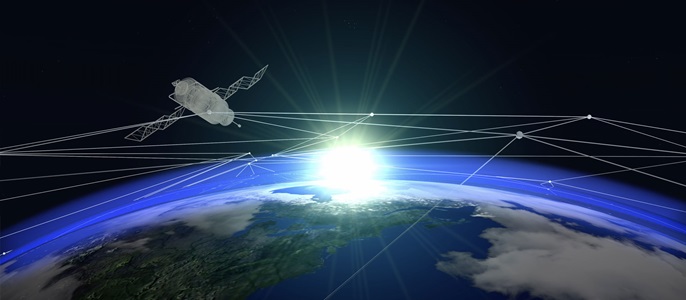Protecting Our Satellite Network from Attack
Going DARC
We’re Peering into Deep Space: 5 Things to Know
By Stephanie Bright
No one likes an unwelcome surprise, especially in deep space.
That’s why Northrop Grumman is dedicated to advancing the frontiers of deep space surveillance, ensuring our warfighters remain ahead of potential threats and bolstering national security for the U.S. and its allies. As a next generation ground system with more advanced technology than previous ground-based radars, our deep-space advanced radar capability (DARC) was designed to fortify security and stability in this increasingly contested domain. After the previous competitive award of DARC Site 1, Northrop Grumman was awarded the Site 2 contract in August 2024, bringing us one step closer to achieving full vigilance of deep space on a global scale.
“DARC will be a game-changer when it comes to Space Domain Awareness,” said Pablo Pezzimenti, vice president, integrated national systems, Northrop Grumman. “It’s a critical capability for avoiding operational surprise because you get a 24/7, all-weather radar capability specifically designed for deep space. DARC will truly always be watching.”
Space also plays a vital role in many of our daily tasks — satellites orbiting the Earth keep us connected with our friends, families and colleagues, enable us to navigate, help us forecast the weather and more — but what happens if that’s interrupted? DARC will also help protect the satellites that our lives revolve around.
Here are five things to know about DARC:
1.) All-Weather
Current ground-based optical sensors can get blocked by clouds. DARC’s technology allows the radar to be effective no matter what the forecast. This is crucial for maintaining constant vigilance, rain or shine, so our adversaries cannot capitalize on natural events to camouflage their activity.
2.) 24/7
Traditional ground-based optical Space Domain Awareness (SDA) systems operate at night when the sky is dark and light reflections from satellites can be detected. DARC will operate around the clock and provide full global coverage.
3.) Farthest Reach
Seeing an object from 22,000 miles away may seem hard to imagine — because it is. That’s roughly a trip around the equator. DARC will have the farthest reach with the most detail of any current ground-based radars on the planet.
4.) International Partnerships
DARC is not only critical for the U.S., but our allies, too. Operating in a trilateral partnership with the United States, Australia and the United Kingdom, DARC expands beyond what the individual nations could achieve alone in one of the most critical domains for future security.
5.) Full Global Coverage
Leveraging the strategic locations of the United States, Australia and the United Kingdom, the global network of advanced ground-based sensors will monitor and detect any point in space from Earth, providing constant vigilance for an area of space essential for our security and way of life.
“With three sites you get coverage of the entire GEO belt. DARC will provide unprecedented SDA capability for an absolutely critical orbital regime which would make achieving operational surprise exceedingly difficult for our adversaries,” said Pablo.
Learn more about Northrop Grumman’s innovative ground systems, or explore what life is like working at Northrop Grumman.
Recommended Stories
Working at Northrop Grumman makes a difference. Whether its designing next-generation aircraft, harnessing digital technologies or building spacecraft that will return humanity to the moon, we contribute to technology that’s transforming the world.


